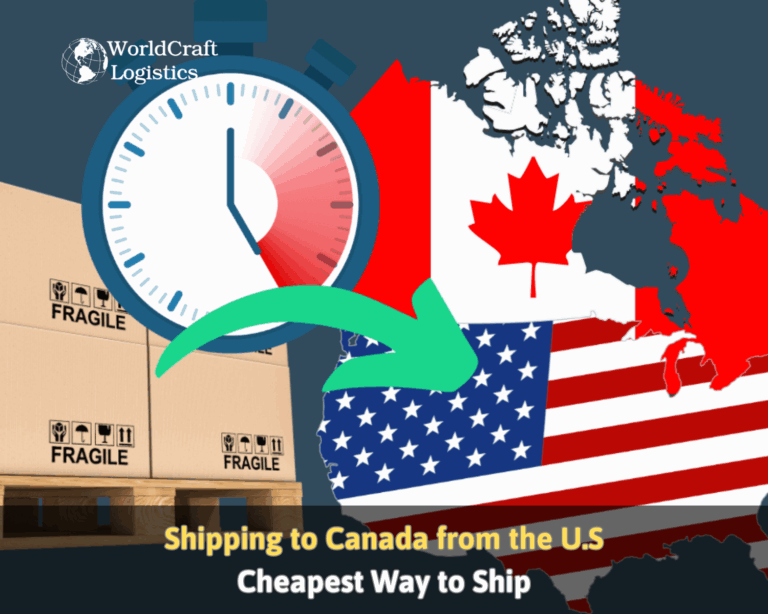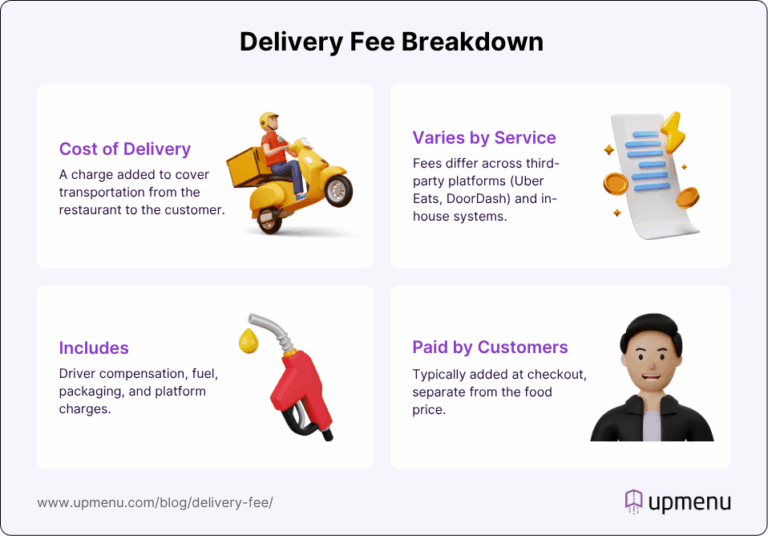The Definitive Guide to Shipping To Usa From China: Rates, Transit …
Your Complete Guide to shipping to USA from China
Navigating the Complexities of Shipping from China to the USA
In the global marketplace, shipping goods from China to the United States presents a significant challenge for businesses of all sizes. The intricacies of international shipping can often overwhelm even the most seasoned importers and exporters. With fluctuating tariffs, varying shipping methods, and the complexities of customs regulations, many businesses find themselves navigating a maze of logistics that can lead to delays, unexpected costs, and compliance issues.
Understanding the nuances of shipping to the USA from China is essential for success in today’s competitive landscape. This guide aims to demystify the shipping process, providing you with the vital knowledge needed to make informed decisions that can streamline your logistics operations.
Key Areas of Focus
In this comprehensive guide, we will cover several critical areas that are pivotal to shipping from China to the USA:
-
Shipping Methods: We will explore the various shipping options available, including ocean freight (both Full Container Load and Less than Container Load) and air freight. Each method has its advantages and disadvantages, depending on factors such as shipment size, urgency, and budget.
-
Costs: Understanding the costs associated with shipping is crucial. We will break down the pricing structures for different shipping modes and provide insights into how to obtain the best rates. You’ll learn about the factors that influence shipping costs, including weight, volume, and distance.
-
Transit Times: Time is often of the essence in logistics. We will provide estimates for transit times associated with each shipping method, helping you to set realistic delivery expectations. Whether you need quick air freight or are considering the more economical ocean freight, knowing the timelines will aid in planning your inventory and supply chain.
-
Customs Regulations: Navigating customs can be one of the most daunting aspects of international shipping. We will outline the key customs requirements for importing goods into the USA, including documentation, tariffs, and potential pitfalls to avoid.
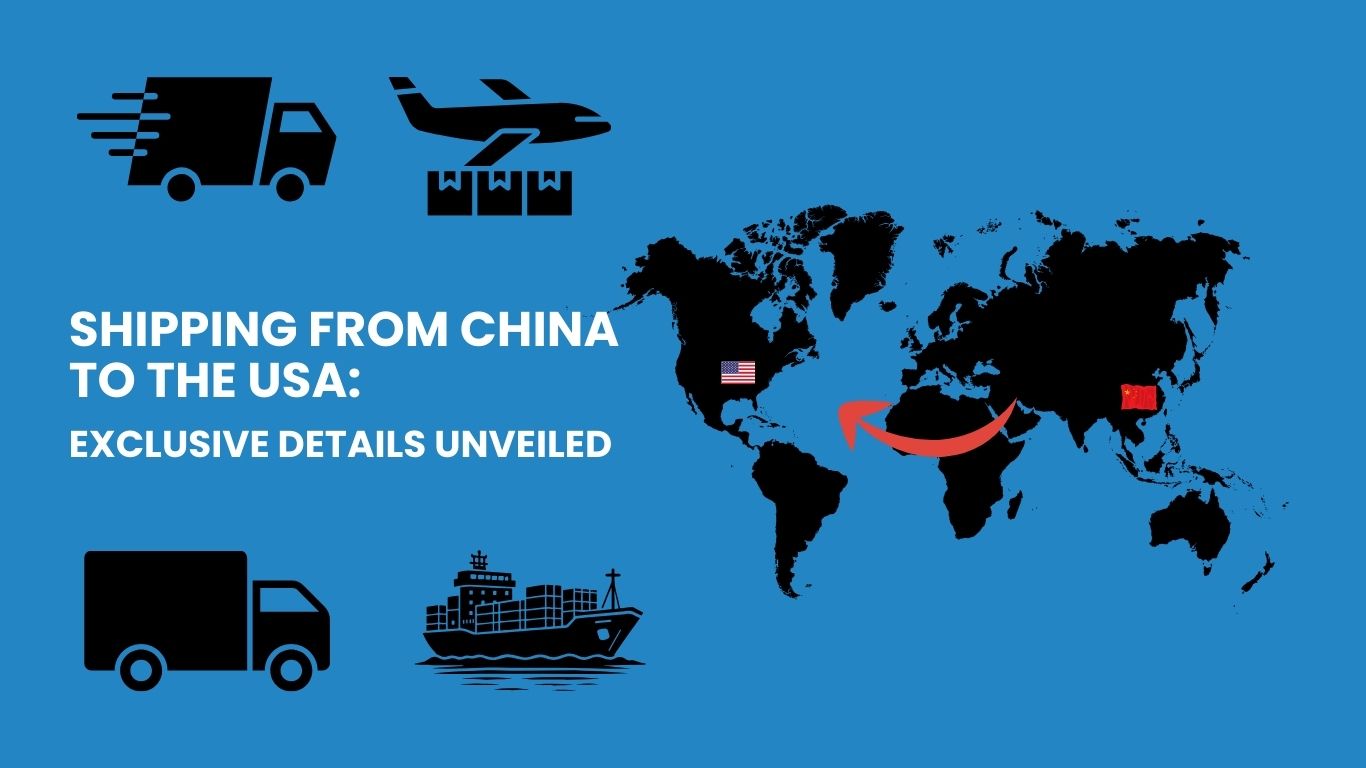
-
Risks and Challenges: Every shipping route comes with its own set of risks. We will discuss common challenges such as delays, damaged goods, and compliance issues, and provide strategies to mitigate these risks effectively.
By the end of this guide, you will have gained expert knowledge and practical insights that will empower you to navigate the complexities of shipping from China to the USA efficiently. From choosing the right shipping method to understanding the costs involved, you will be equipped to make strategic decisions that can enhance your business operations and bottom line. Let’s embark on this journey to mastering international shipping!
Table of Contents
- Your Complete Guide to shipping to USA from China
- Understanding Your Shipping Options: A Detailed Comparison
- Deconstructing the Cost: A Full Pricing Breakdown
- Transit Time Analysis: How Long Will It Take?
- Navigating Customs Clearance: A Step-by-Step Guide
- A Practical Guide to Choosing Your Freight Forwarder
- Incoterms 2020 Explained for Shippers
- Risk Management: Identifying and Mitigating Common Shipping Problems
- Frequently Asked Questions (FAQs) for shipping to USA from China
- Conclusion: Key Takeaways for Successful Shipping
- Important Disclaimer
Understanding Your Shipping Options: A Detailed Comparison
Overview of Shipping Methods from China to the USA
When shipping goods from China to the USA, businesses have several transportation methods at their disposal, each with its own unique characteristics, advantages, and drawbacks. Understanding these options is crucial for optimizing logistics, cost management, and delivery timelines. Below is a comprehensive comparison table outlining the different shipping methods available, followed by a detailed breakdown of each.
| Shipping Method | Best For | Speed | Cost Level | Key Advantages | Key Disadvantages |
|---|---|---|---|---|---|
| Sea FCL | Large shipments (full container) | 30-40 days | Low | Cost-effective for large volumes | Long transit time; potential for delays |
| Sea LCL | Moderate shipments (less than full container) | 30-40 days | Moderate | Flexibility for smaller shipments | Longer processing time due to consolidation |
| Air Freight | Urgent shipments | 3-10 days | High | Fastest shipping option | Expensive; weight limits may apply |
| Rail Freight | Bulk shipments to nearby ports | 15-25 days | Moderate | Cost-effective for landlocked regions | Limited to certain routes; slower than air |
| Express Shipping | Small packages, urgent deliveries | 1-3 days | Very High | Fast and reliable; door-to-door service | Very expensive; weight limitations |
Sea Freight
Full Container Load (FCL)
What It Is:
FCL shipping involves utilizing an entire container for a single shipper’s goods. This method is ideal for businesses with large volumes of products.
When to Use:
Use FCL when you have enough cargo to fill a container (either 20’ or 40’), which can lead to significant cost savings per unit.
Pros:
– Cost-Efficient: The more you ship, the lower the cost per unit.
– Less Risk of Damage: Your cargo is not mixed with others, reducing the risk of damage.
– Simpler Logistics: Direct shipping from the port of origin to the destination without consolidation delays.
Cons:
– Long Transit Time: Typically takes 30-40 days, which may not be suitable for urgent shipments.
– High Upfront Costs: Requires a larger initial investment, which may not be feasible for smaller businesses.
Less Than Container Load (LCL)
What It Is:
LCL shipping allows multiple shippers to share a single container, making it suitable for smaller shipments.
When to Use:
Use LCL when your shipment does not fill an entire container, allowing you to pay only for the space you use.
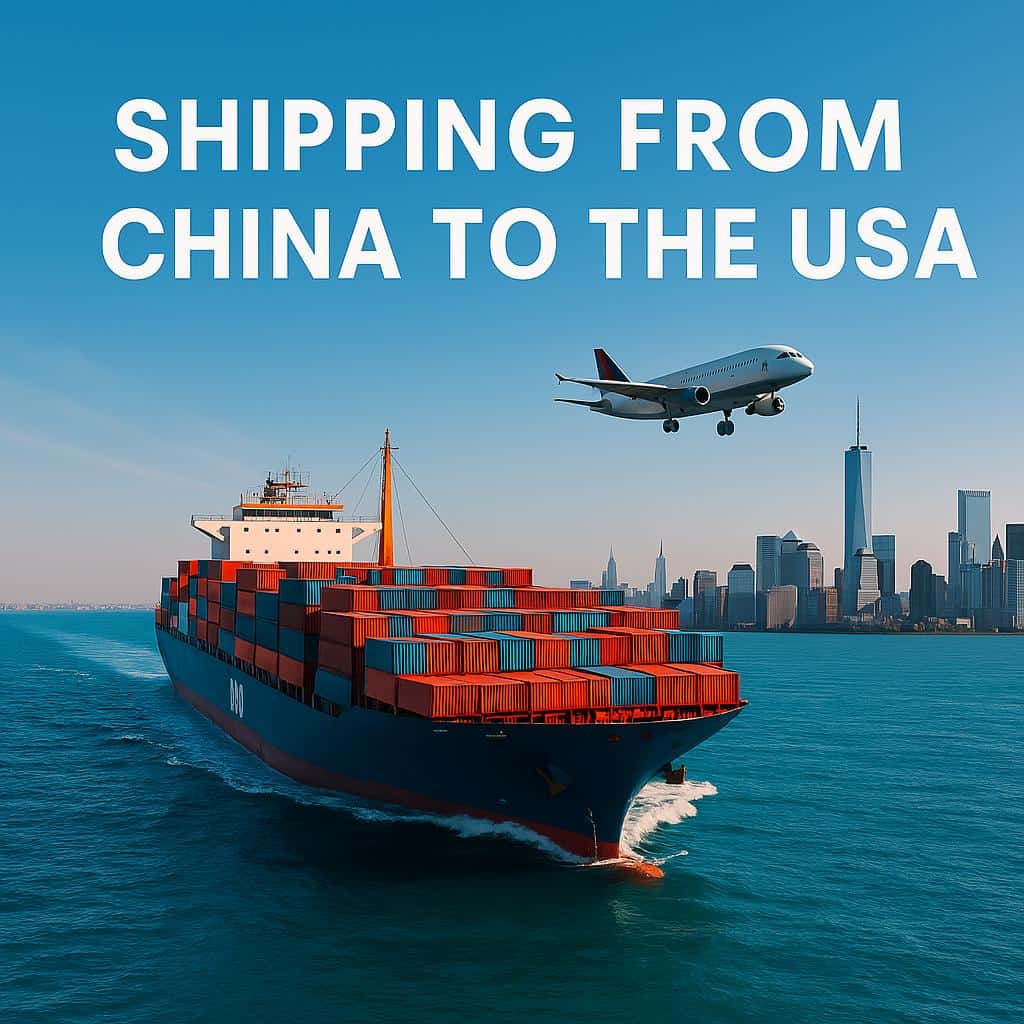
Pros:
– Cost-Effective for Small Shipments: Lower upfront costs compared to FCL.
– Flexibility: Ideal for businesses that cannot commit to larger shipments.
Cons:
– Longer Processing Times: Requires time for consolidation and deconsolidation, typically extending transit times by several days.
– Higher Risk of Damage: Goods are mixed with other shipments, increasing the potential for damage.
Air Freight
What It Is:
Air freight involves transporting goods via aircraft, making it the fastest shipping method available.
When to Use:
Use air freight for time-sensitive shipments or high-value goods that require quick delivery.
Pros:
– Speed: Transit times range from 3 to 10 days, significantly faster than sea freight.
– Reliable Tracking: Air freight services often provide advanced tracking options.
Cons:
– High Costs: Generally the most expensive shipping method, making it less viable for low-value goods.
– Weight Limitations: Charges are often based on dimensional weight, which can be costly for lightweight but bulky items.
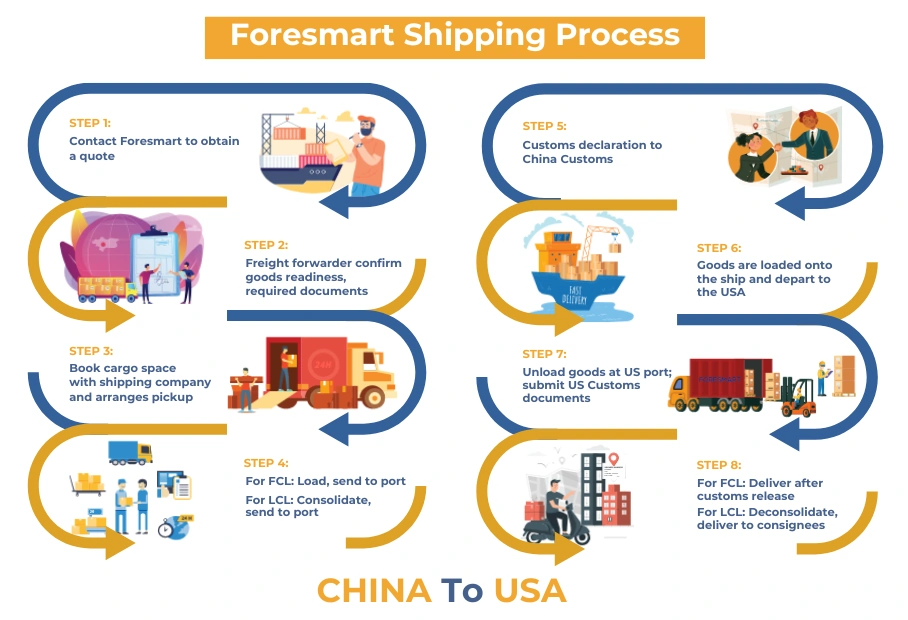
Rail Freight
What It Is:
Rail freight is an alternative mode for transporting goods over land, particularly effective for bulk shipments to coastal ports.
When to Use:
Use rail freight when shipping large quantities of goods overland, especially in regions with established rail networks.
Pros:
– Cost-Effective: Generally cheaper than road transport for long distances.
– Eco-Friendly: More environmentally friendly than trucking.
Cons:
– Limited Routes: Availability is restricted to rail lines, which may not connect directly to all destinations.
– Slower Than Air: Transit times range from 15 to 25 days, slower than air freight.
Express Shipping
What It Is:
Express shipping involves using international courier services for rapid delivery of small packages.
When to Use:
Use express shipping for urgent deliveries or when sending samples and documents.
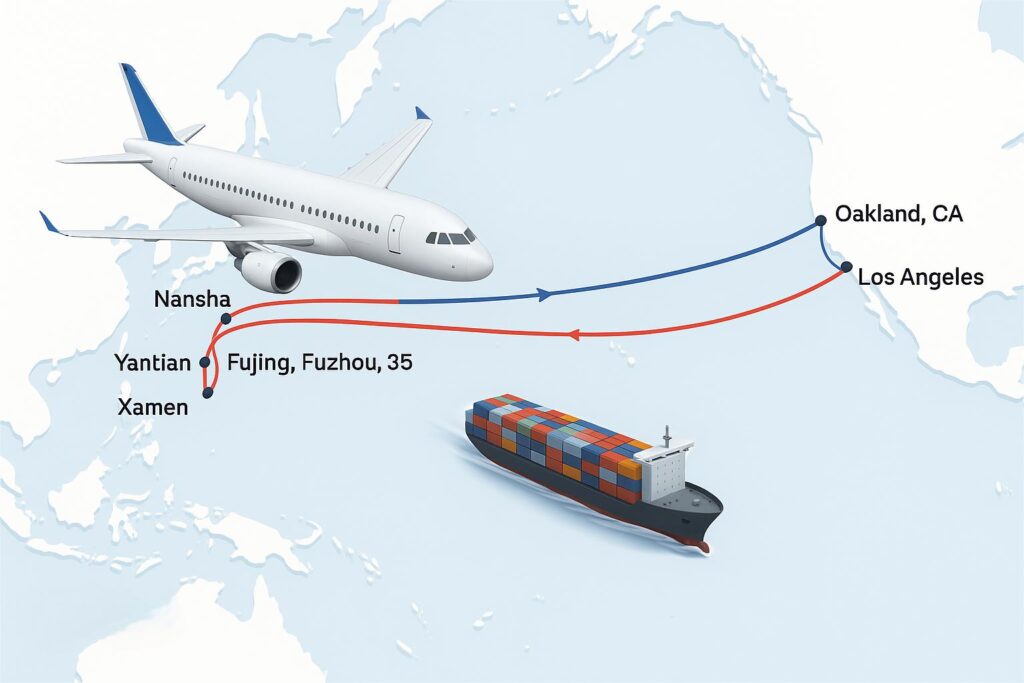
Pros:
– Speed: Delivery can occur within 1-3 days.
– Convenience: Door-to-door service simplifies logistics.
Cons:
– Very High Costs: This method is significantly more expensive than other options.
– Weight Limitations: Often best suited for packages under 150 kg.
Special Considerations
Multimodal Transport
Multimodal transport combines different shipping methods to optimize logistics. For instance, a shipment may travel by rail to a port, then switch to sea freight for ocean transport. This approach can reduce costs and improve transit times, especially for large or bulky shipments.
Specialized Options
- Roll-on/Roll-off (RoRo): Ideal for vehicles or heavy equipment, RoRo allows these items to be driven directly onto the ship, simplifying loading and unloading.
- Break Bulk: This method is used for large items that cannot fit into standard containers. It requires specialized handling and is often used for construction equipment or machinery.
Conclusion
Choosing the right shipping method from China to the USA involves balancing speed, cost, and the nature of your goods. Understanding the unique characteristics of each option allows businesses to make informed decisions that align with their logistical needs and budget constraints. Whether opting for cost-effective sea freight or the rapid delivery of air freight, being strategic about shipping choices can enhance overall supply chain efficiency.
Deconstructing the Cost: A Full Pricing Breakdown
Understanding the Cost of Shipping from China to the USA
Shipping goods from China to the USA involves a variety of costs that can significantly impact your overall logistics budget. Understanding these costs can help you make informed decisions, optimize your shipping strategy, and ultimately save money. The costs can be broadly categorized into three main components: Main Freight, Origin Charges, and Destination Charges.
Main Cost Components
Main Freight
This is typically the largest portion of your shipping costs and includes the expense associated with transporting your goods via either air or ocean freight. The choice between these two modes largely depends on the urgency, size, and weight of your shipment.
- Air Freight: Generally faster but more expensive. Air freight costs are usually calculated on a per kilogram basis and can fluctuate based on market conditions and fuel prices.
- Ocean Freight: More economical for larger shipments, particularly when using Full Container Load (FCL) or Less than Container Load (LCL) methods. The pricing for ocean freight is usually a flat rate based on container size.
Origin Charges
Origin charges include all fees incurred at the point of departure in China. These costs can vary depending on the nature of your shipment and the specific logistics provider you choose. Key components of origin charges may include:
- Packing and Crating: Proper packaging is crucial to prevent damage during transit. Costs vary based on the materials used and the complexity of packing.
- Documentation Fees: Involves costs for preparing shipping documents, such as the bill of lading, commercial invoice, and export declarations.
- Loading Fees: Charges for loading your goods onto the transport vehicle, which can vary by port and service provider.
Destination Charges
Once your shipment arrives in the USA, various fees will apply at the destination. These can include:
- Unloading Fees: Costs associated with unloading your shipment at the destination port.
- Customs Duties and Taxes: Import duties are assessed based on the value of your goods and can vary depending on the product category and country of origin.
- Delivery Fees: Charges for transporting the goods from the port to the final destination, which can vary based on distance and mode of transport.
Detailed Cost Factor Analysis
Main Freight Costs
The main freight cost is influenced by several factors:
– Weight and Volume: Heavier and bulkier shipments generally cost more. Shipping costs are often calculated using either actual weight or dimensional weight (whichever is greater).
– Shipping Mode: Air freight is usually more expensive than ocean freight. Within ocean freight, FCL is typically cheaper than LCL for larger shipments.
– Seasonality: Shipping rates can fluctuate based on seasonal demand, with peak seasons typically driving prices higher.
Origin Charges
Key factors influencing origin charges include:
– Packaging Requirements: Special packaging for fragile items increases costs.
– Supplier Location: Proximity to major ports can affect loading and transportation fees.
– Documentation Complexity: More complex shipments with additional paperwork will incur higher fees.
Destination Charges
Factors affecting destination charges include:
– Customs Regulations: Compliance with U.S. customs regulations can add costs if additional documentation is needed.
– Delivery Distance: Longer distances from the port to the final destination will increase delivery fees.
– Handling Requirements: Special handling for oversized or sensitive items can lead to additional charges.
Example Pricing Table
Below is a sample pricing table for shipping options from China to the USA. Please note that these prices are estimates and can vary based on several factors, including shipping routes, weight, and market conditions.
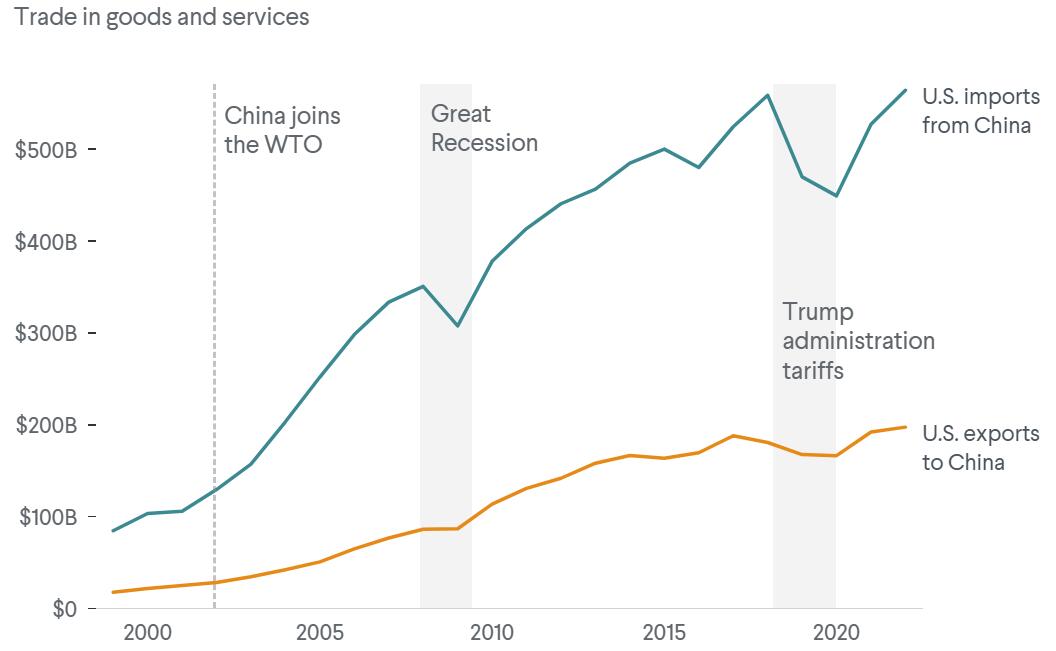
| Shipping Method | 20ft Container | 40ft Container | LCL (per CBM) | Air Freight (per kg) |
|---|---|---|---|---|
| Estimated Cost | $2,500 – $3,500 | $4,500 – $6,000 | $100 – $150 | $5 – $10 |
Disclaimer: The prices listed above are estimates and can fluctuate based on market conditions, fuel costs, and other variables. It is advisable to obtain quotes from multiple freight forwarders for accurate pricing tailored to your specific needs.
How to Reduce Costs
-
Consolidate Shipments: If possible, combine smaller shipments into one larger shipment to take advantage of lower per-unit shipping costs, particularly with LCL.
-
Choose the Right Mode: Evaluate the urgency of your shipment. For less time-sensitive goods, consider ocean freight over air freight to save money.
-
Negotiate Rates: Work with multiple freight forwarders to negotiate better rates. Long-term relationships may yield discounts or better terms.
-
Optimize Packaging: Invest in efficient packaging that minimizes weight and volume, potentially reducing both freight and handling costs.
-
Stay Informed on Tariffs: Keep abreast of any changes in tariffs and customs duties that may affect your shipping costs, allowing you to plan accordingly.
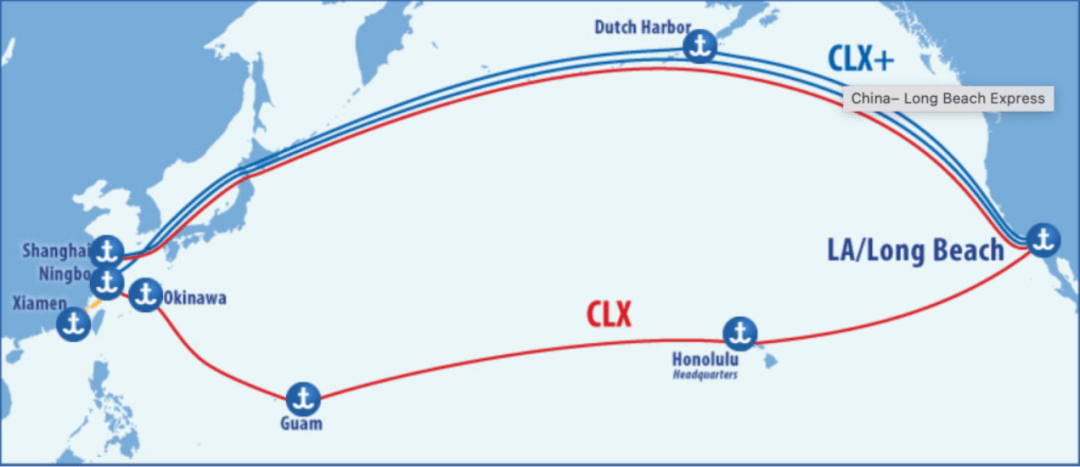
-
Use Technology: Utilize freight calculators and management software to compare rates and find the most cost-effective shipping solutions.
-
Plan Ahead: Avoid peak shipping seasons whenever possible to mitigate increased costs. Early planning allows for better rates and availability.
By understanding the various cost components and implementing strategies to reduce expenses, businesses can effectively manage their shipping costs when importing goods from China to the USA.
Transit Time Analysis: How Long Will It Take?
Understanding Transit Times for Shipping from China to the USA
Shipping goods from China to the USA involves several factors that can significantly influence transit times. Understanding these variables is crucial for international shippers, importers, exporters, and business owners to effectively plan their logistics.
Factors Influencing Transit Time
- Shipping Mode: The choice between air freight, sea freight, and express shipping greatly impacts delivery speed.
- Air Freight: Typically the fastest option, with transit times ranging from 3 days for express services to about 8-10 days for standard air freight.
- Sea Freight: Generally takes longer, with typical transit times between 30-40 days, but is more cost-effective for larger shipments.
-
Express Shipping: Offers a balance between speed and cost, usually delivering within 3-5 days.
-
Port Congestion: Both the origin and destination ports can experience congestion, leading to delays. Factors contributing to congestion include seasonal surges in shipping activity, labor strikes, or operational inefficiencies at the port.
-
Customs Clearance: Customs procedures can be unpredictable. Delays may occur due to incomplete paperwork, inspections, or random audits. Ensuring accurate and complete documentation can help mitigate these risks.
-
Shipping Routes: The specific route taken from China to the USA also plays a role. Some routes may be faster due to direct shipping options, while others might involve multiple stops, increasing overall transit time.
-
Weather Conditions: Adverse weather can delay shipments, particularly for sea freight. Storms, hurricanes, or heavy fog can disrupt shipping schedules and lead to unexpected delays.
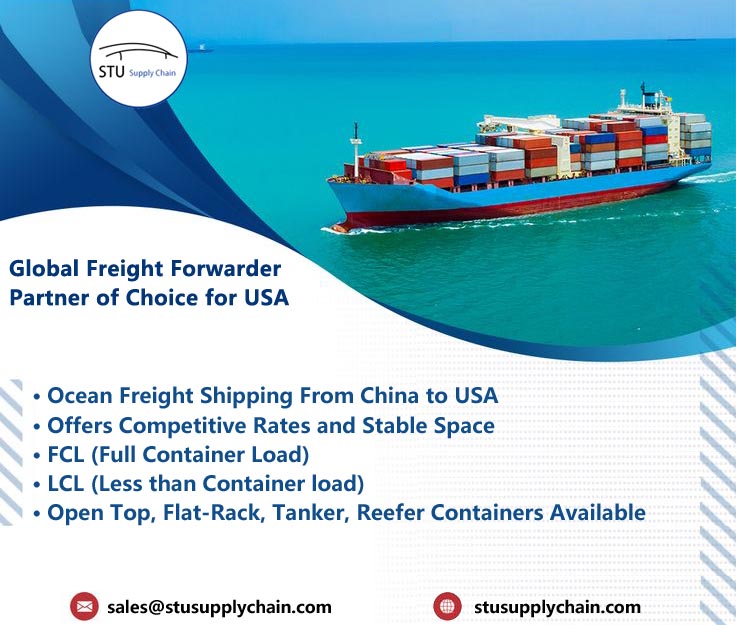
Estimated Transit Time Table
| Origin | Destination | Sea Freight (Days) | Air Freight (Days) |
|---|---|---|---|
| Shanghai | Los Angeles | 30-40 | 8-10 |
| Shenzhen | New York | 30-40 | 8-10 |
| Ningbo | Chicago | 30-40 | 8-10 |
| Guangzhou | San Francisco | 30-40 | 8-10 |
| Qingdao | Seattle | 30-40 | 8-10 |
Context and Explanation
The estimates provided in the table represent port-to-port transit times and do not account for additional time required for local transportation from the warehouse to the port or vice versa. For instance, if you are shipping goods from Shanghai to Los Angeles via sea freight, you should expect the shipment to take approximately 30-40 days to reach the port in Los Angeles after leaving the port in Shanghai. This timeframe includes sailing time but excludes any delays that may arise from port congestion or customs clearance.
It is essential to plan for potential delays by building in buffer time to your logistics schedule. For example, if you anticipate needing the goods within a specific timeframe, consider initiating your shipment well in advance, especially during peak seasons when shipping volumes are higher.
Additionally, regular communication with your freight forwarder can help you stay updated on any potential delays and allow you to adjust your plans accordingly. By understanding these transit times and factors, businesses can make informed decisions that align with their operational needs and customer expectations.
In summary, whether you choose air freight for its speed or sea freight for its cost-effectiveness, being aware of the variables that influence transit times will empower you to navigate the complexities of shipping from China to the USA more efficiently.
Navigating Customs Clearance: A Step-by-Step Guide
The Process Explained
When shipping goods from China to the USA, navigating customs clearance is crucial to ensure timely delivery and compliance with regulations. Here’s a step-by-step guide to the typical customs clearance workflow:
-
Pre-shipment Preparation: Before shipping, confirm that all goods comply with U.S. regulations. This includes ensuring that the products are not prohibited or restricted. Review the necessary documentation and prepare for customs declarations.
-
Shipping Arrangements: Choose a reliable freight forwarder or customs broker who can facilitate the shipping process. They will assist in selecting the appropriate shipping method (air or ocean) and ensure that all documentation is in order.
-
Document Submission: Submit all required documentation to your customs broker or freight forwarder. This includes the Commercial Invoice, Packing List, and Bill of Lading. Ensure that the information is accurate and matches the shipment contents.
-
Customs Declaration: Your customs broker will file a customs declaration on your behalf. This declaration includes details about the goods, their value, and origin. It’s essential to declare the correct value to avoid penalties.
-
Duties and Taxes Calculation: Customs will assess duties and taxes based on the declared value and the Harmonized System (HS) codes. Your customs broker can provide guidance on the applicable rates.
-
Customs Inspection: In some cases, customs may require an inspection of your shipment. If selected, they will verify the contents against the documentation. Being prepared for potential inspections can help mitigate delays.
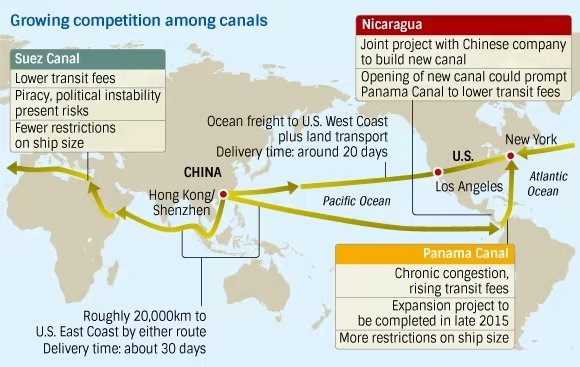
-
Release of Goods: Once customs clearance is granted, you will receive a release notification. Your goods can then be transported to their final destination in the U.S. Ensure that all post-clearance documentation is retained for your records.
Essential Documentation
Proper documentation is vital for smooth customs clearance. Here are the key documents required when shipping from China to the USA:
-
Commercial Invoice: This document provides a detailed account of the transaction, including the seller and buyer information, product descriptions, quantities, and prices. It serves as a primary document for customs clearance and is used to assess duties and taxes.
-
Packing List: The packing list details the contents of each package, including dimensions and weight. It helps customs officials verify the shipment against the commercial invoice and assists in the inspection process.
-
Bill of Lading (BOL): The BOL is a contract between the shipper and the carrier, outlining the terms of transportation. It includes information about the shipment, such as origin, destination, and the consignee. It serves as proof of shipment and is necessary for the release of goods.
-
Import License: Depending on the type of goods being imported, an import license may be required. This document grants permission to import specific products into the U.S. Ensure to check if your goods fall under regulated categories.
-
Certificate of Origin: This document certifies the country of origin of the goods. It may be necessary for certain products to determine eligibility for reduced tariffs or compliance with trade agreements.
Duties, Taxes, and HS Codes
Understanding duties, taxes, and HS codes is essential for accurate customs clearance:
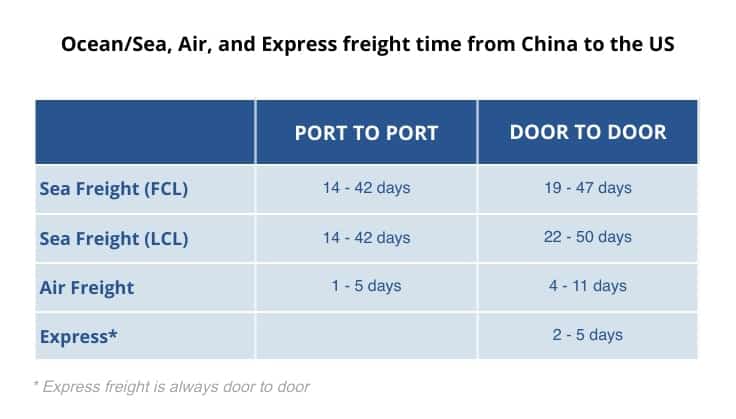
-
HS Codes: The Harmonized System (HS) codes are standardized numerical codes used to classify traded products. Each product category is assigned a unique code that determines the applicable duties and taxes. Accurate classification is crucial, as misclassification can lead to fines or delays.
-
Duties and Taxes Calculation: Duties are tariffs imposed by the U.S. government on imported goods. The amount of duty owed is calculated based on the declared value of the goods and their HS code classification. Various factors influence duty rates, including trade agreements and product types. In addition to duties, other taxes may apply, such as sales tax or excise tax.
To estimate potential duties and taxes, importers can consult the U.S. Customs and Border Protection (CBP) website or work with their customs broker for precise calculations.
Common Problems & Solutions
Navigating customs clearance can be challenging. Here are some common issues importers face and tips on how to avoid them:
- Incorrect Documentation: Missing or inaccurate paperwork can lead to delays.
-
Solution: Double-check all documents before submission. Ensure that the information on the commercial invoice matches the packing list and bill of lading. Engage a customs broker for expertise in documentation.
-
Misclassification of Goods: Incorrect HS code assignment can result in penalties and higher duties.
-
Solution: Invest time in researching the correct HS codes for your products. Consult with your freight forwarder or customs broker to ensure accurate classification.
-
Failure to Comply with Regulations: Importing restricted or prohibited items can result in confiscation or fines.

-
Solution: Familiarize yourself with U.S. import regulations and ensure that your products comply. Check with the U.S. Customs and Border Protection for a list of restricted items.
-
Customs Inspections: Random inspections can delay the clearance process.
-
Solution: Ensure that your documentation is complete and accurate to minimize the likelihood of inspections. Prepare for potential delays by allowing extra time in your shipping schedule.
-
Inadequate Understanding of Duties and Taxes: Unexpected costs can impact your bottom line.
- Solution: Work closely with your customs broker to understand all applicable duties and taxes. Calculate these costs in advance to avoid surprises during the clearance process.
By following these steps and understanding the documentation and regulations involved, you can streamline the customs clearance process when shipping from China to the USA. Proper preparation and a knowledgeable partner can significantly enhance your shipping experience and ensure compliance with U.S. customs regulations.
A Practical Guide to Choosing Your Freight Forwarder
Understanding the Role of a Freight Forwarder
When shipping goods from China to the USA, selecting the right freight forwarder can significantly impact your logistics efficiency, costs, and overall experience. A freight forwarder acts as an intermediary between you and the shipping carriers, helping you navigate the complexities of international shipping. To make an informed choice, you should focus on key qualities that define a reliable freight forwarder, follow a structured sourcing checklist, and remain vigilant for any warning signs.
Key Qualities to Look For
-
Experience and Expertise: Look for a freight forwarder with substantial experience in shipping from China to the USA. They should understand the nuances of both markets, including regulations, tariffs, and logistics challenges. A seasoned forwarder can anticipate potential issues and offer proactive solutions.
-
Strong Network: A well-connected freight forwarder has established relationships with various shipping carriers, customs brokers, and logistics providers. This network can lead to better rates, priority service, and quicker resolutions to any issues that may arise during transit.
-
Licensing and Compliance: Ensure that the freight forwarder is licensed and compliant with both U.S. and Chinese regulations. This includes having the necessary licenses to operate as a freight forwarder and ensuring they adhere to customs regulations. This compliance is crucial for avoiding costly delays and penalties.
-
Transparent Communication: A good freight forwarder maintains open lines of communication throughout the shipping process. They should provide clear updates on shipment status, respond promptly to inquiries, and be available to discuss any concerns you may have.
-
Customer Support: Excellent customer service is critical. Your freight forwarder should be responsive, knowledgeable, and willing to assist you at every step. Look for forwarders who offer dedicated account management and support throughout the shipping process.
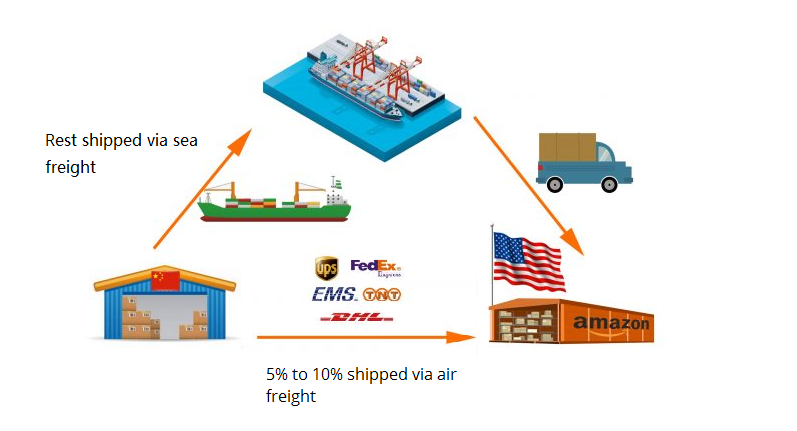
Sourcing Checklist for Selecting a Freight Forwarder
To streamline your search for a freight forwarder, follow this actionable checklist:
- Define Your Shipping Needs:
- Determine the type of goods you are shipping (e.g., size, weight, value).
- Identify your preferred shipping method (ocean, air, or express).
-
Establish your timeline for delivery.
-
Conduct Thorough Research:
- Use online platforms and directories to find potential freight forwarders.
- Check for reviews and testimonials from other businesses that have used their services.
-
Ask for recommendations from industry peers or business networks.
-
Request Quotes:
- Contact multiple freight forwarders to request detailed quotes.
- Ensure that quotes include all potential costs, such as freight charges, customs duties, and additional fees.
-
Compare the quotes not just on price but also on service offerings and transit times.
-
Ask Relevant Questions:
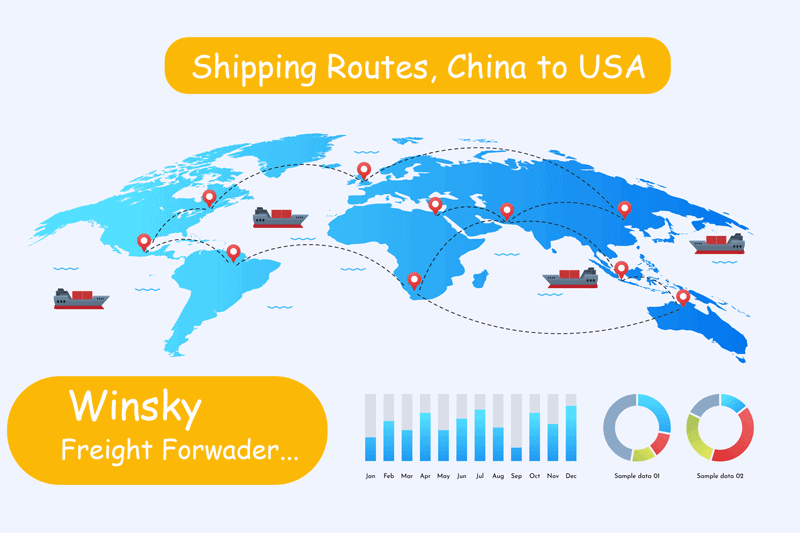
- Inquire about their experience with shipping to the USA from China.
- Ask about their claims process and how they handle damaged or lost goods.
-
Discuss their approach to customs clearance and any additional services they offer, such as warehousing or insurance.
-
Check References:
- Ask for references from previous clients, particularly those in your industry or shipping similar goods.
- Contact these references to gain insights into their experiences and satisfaction levels.
- Look for any recurring themes in the feedback, both positive and negative.
Red Flags to Watch Out For
While assessing potential freight forwarders, be vigilant for the following warning signs:
-
Lack of Transparency: If a freight forwarder is hesitant to provide detailed information about their services, pricing, or terms, consider this a major red flag. Transparency is essential in building trust.
-
Poor Communication: If they are slow to respond to inquiries or fail to provide clear answers, this could indicate future issues with service levels.
-
No Physical Presence: A reputable freight forwarder should have a physical office or location. Be cautious of those operating solely online without a verifiable address or contact information.
-
Unverified Claims: Be wary of forwarders that make unrealistic promises regarding shipping times or costs. If it sounds too good to be true, it probably is.
-
Negative Reviews: Look for consistent complaints in reviews, especially regarding customer service, reliability, or hidden fees. A pattern of negative feedback can be a strong indicator of potential issues.
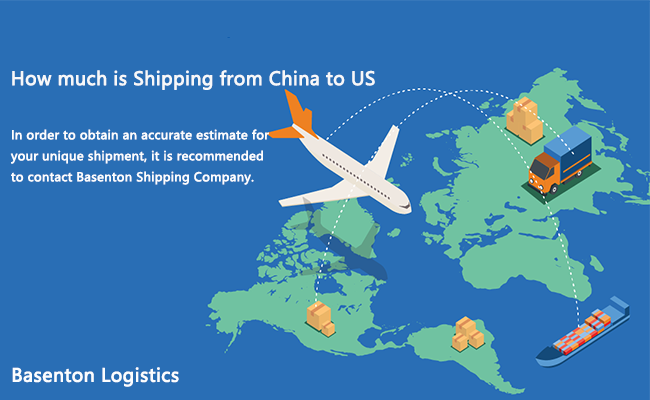
Conclusion
Choosing the right freight forwarder is a critical step in ensuring successful shipping from China to the USA. By focusing on essential qualities, following a structured sourcing checklist, and being aware of potential red flags, you can make a well-informed decision that aligns with your business needs. A reliable freight forwarder will not only streamline your logistics but also enhance your overall shipping experience, allowing you to focus on what matters most—growing your business.
Incoterms 2020 Explained for Shippers
Understanding Incoterms for International Shipping
Incoterms, short for International Commercial Terms, are standardized trade terms published by the International Chamber of Commerce (ICC). They define the responsibilities of buyers and sellers in international transactions, particularly concerning the delivery of goods. The 2020 version of Incoterms introduces several updates to clarify shipping responsibilities, costs, and risks, which are particularly relevant for shippers dealing with imports and exports between China and the USA. Understanding these terms is crucial for effective logistics management and to avoid disputes in international shipping.
Key Incoterms Table
| Incoterm | Who Pays for Transport? | Where Risk Transfers? | Best for |
|---|---|---|---|
| EXW (Ex Works) | Buyer | At the seller’s premises | Buyers who want full control over shipping |
| FOB (Free On Board) | Seller | Once goods are on board the vessel | Sellers with reliable shipping partners |
| CIF (Cost, Insurance, and Freight) | Seller | Once goods are on board the vessel | Buyers seeking insurance coverage |
| DDP (Delivered Duty Paid) | Seller | At buyer’s premises | Buyers wanting a hassle-free delivery |
EXW (Ex Works)
Under the EXW term, the seller is responsible for making the goods available at their premises or another named place (such as a factory or warehouse). The buyer assumes all costs and risks associated with transporting the goods from that point onward. This term is best for buyers who want complete control over the shipping process and are prepared to handle all logistics, including export formalities. For instance, a German importer purchasing machinery from a Chinese supplier may prefer EXW, allowing them to choose their freight forwarder and shipping method.
FOB (Free On Board)
FOB indicates that the seller is responsible for all costs and risks until the goods are loaded onto the vessel at the port of shipment. After loading, the risk transfers to the buyer, who will cover the freight and insurance from that point onward. This term is commonly used in sea freight and is advantageous for sellers who have established relationships with shipping lines. For example, an Australian exporter selling textiles to a US buyer may choose FOB Shanghai, where they manage the shipping to the port, but the buyer takes over once the goods are on board.
CIF (Cost, Insurance, and Freight)
CIF requires the seller to pay for the cost of goods, insurance, and freight to transport the goods to the destination port. The risk transfers to the buyer as soon as the goods are loaded on board the vessel. This term provides buyers with peace of mind, as they are covered by insurance during transit. For instance, a Brazilian company importing electronics from China might opt for CIF, ensuring that their goods are insured against loss or damage while in transit, which can be particularly valuable given the high value of electronics.
DDP (Delivered Duty Paid)
DDP places maximum responsibility on the seller, who is accountable for all costs associated with transporting the goods to the buyer’s location, including duties and taxes. The risk transfers to the buyer only when the goods are delivered to their premises. This term is ideal for buyers who prefer a hassle-free experience, as it allows them to receive the goods without worrying about logistics, tariffs, or customs clearance. For example, a US-based retailer importing furniture from China might use DDP to ensure that the supplier handles all aspects of shipping, including customs duties, making the process seamless.
Conclusion
Understanding Incoterms is essential for international shippers, especially when navigating the complexities of shipping goods from China to the USA. Each Incoterm offers unique advantages and responsibilities, which can significantly impact shipping costs, risk management, and overall logistics efficiency. By selecting the appropriate Incoterm for your shipments, you can streamline your operations and enhance your shipping strategy, ultimately leading to smoother transactions and satisfied customers.
Risk Management: Identifying and Mitigating Common Shipping Problems
Introduction
In the world of international shipping, especially when transporting goods from China to the United States, proactive risk management is crucial for ensuring the smooth flow of operations. The complexities of logistics, customs regulations, and varying transportation modes create a landscape fraught with potential challenges. By identifying risks early and implementing effective mitigation strategies, businesses can minimize disruptions, reduce costs, and enhance customer satisfaction. This guide outlines common shipping problems and offers practical solutions to navigate the shipping process with confidence.
Risk Analysis Table
| Potential Risk | Impact | Mitigation Strategy |
|---|---|---|
| Cargo Damage | Loss of goods or additional costs for replacements can significantly impact profits. | Invest in high-quality packaging materials, conduct regular inspections, and utilize reliable carriers. |
| Delays | Increased lead times can lead to stockouts and dissatisfied customers. | Plan shipments well in advance, monitor transit times, and maintain communication with logistics providers. |
| Customs Holds | Goods can be delayed or even returned, resulting in increased costs and lost sales. | Ensure all documentation is accurate, comply with customs regulations, and consider hiring a customs broker. |
| Tariff Changes | Sudden changes can increase costs unexpectedly and affect pricing strategies. | Stay informed about trade policies, utilize tariff classification, and factor potential changes into pricing. |
| Supply Chain Disruptions | Unexpected events (e.g., natural disasters, political instability) can halt shipments. | Diversify suppliers, maintain safety stock, and have contingency plans for alternative sourcing and logistics. |
| Regulatory Compliance | Non-compliance can result in fines and delays in shipment processing. | Regularly review shipping regulations, conduct compliance training, and consult with legal experts when necessary. |
Cargo Insurance Explained
Cargo insurance is a critical component of risk management in international shipping. It protects businesses against financial losses due to unforeseen incidents that may occur during transit, such as theft, damage, or loss of cargo.
What Cargo Insurance Covers
- Physical Damage: This includes damage to goods caused by accidents, such as collisions, natural disasters, or mishandling during loading and unloading.
- Theft: Insurance can cover losses from theft or burglary during transit or storage.
- Total Loss: If goods are lost completely during transport, insurance can provide compensation for the full value of the shipment.
- General Average: This maritime principle allows for shared losses incurred during a voyage. If a ship incurs an expense to save the vessel and cargo, insurance can cover a portion of the loss.
Types of Cargo Insurance
- All-Risk Coverage: This comprehensive policy covers all possible risks, except those specifically excluded. It is ideal for businesses looking for extensive protection.
- Named Perils Coverage: This type covers only risks explicitly listed in the policy, such as fire, theft, or collision. It may be more affordable but offers less protection.
- Specific Cargo Insurance: Designed for unique or high-value items, this coverage provides tailored protection for specialized shipments.
Why Cargo Insurance is Essential
Investing in cargo insurance is vital for several reasons:
- Financial Security: It provides peace of mind, knowing that financial losses are covered in case of unforeseen events.
- Business Continuity: Minimizing the financial impact of cargo loss ensures that businesses can continue operations without significant disruptions.
- Customer Trust: Having insurance in place can enhance customer confidence, as they know that their orders are protected, fostering long-term relationships.
In conclusion, understanding and addressing potential risks when shipping from China to the USA is essential for successful international trade. By implementing robust risk management strategies and securing appropriate cargo insurance, businesses can navigate the complexities of global shipping with greater assurance, ultimately driving growth and customer satisfaction.
Frequently Asked Questions (FAQs) for shipping to USA from China
1. What are the different shipping methods available for shipping from China to the USA?
Shipping from China to the USA typically involves three main methods: Ocean Freight, Air Freight, and Express Shipping. Ocean freight is cost-effective for large shipments, while air freight is faster but more expensive. Express shipping, usually handled by couriers like FedEx or DHL, offers the quickest delivery times for smaller packages.
2. How long does it take to ship goods from China to the USA?
Transit times vary by shipping method: Ocean freight generally takes 30-40 days, standard air freight takes about 8-10 days, and express shipping can take as little as 3 days. However, actual times may be affected by factors such as customs processing, weather conditions, and port congestion.
3. What factors influence the cost of shipping from China to the USA?
Shipping costs are influenced by several factors, including the mode of transport (ocean vs. air), type of goods, weight and volume (dimensional weight), and shipping routes. Additionally, tariffs and duties may apply, affecting the overall cost.
4. What is the difference between Full Container Load (FCL) and Less than Container Load (LCL)?
FCL means you are using an entire shipping container, which is more economical for larger shipments. In contrast, LCL involves sharing a container with other shipments, which can be cost-effective for smaller loads but may take longer due to the need for consolidation and deconsolidation.
5. What are customs bonds, and do I need one when shipping to the USA?
A customs bond is a contract between the importer, the surety company, and U.S. Customs and Border Protection (CBP) that ensures payment of duties and taxes. If you are importing goods valued over $2,500 or certain regulated items, a customs bond is required to clear your shipment through customs.
6. How is chargeable weight calculated for freight shipping?
Chargeable weight is determined by comparing the actual weight of the shipment to its dimensional weight. Dimensional weight is calculated based on the volume of the package. For air freight, carriers typically use the higher of the two weights to determine shipping costs, meaning large, lightweight packages can incur higher charges.
7. What documentation is required for shipping from China to the USA?
Key documents include the Bill of Lading (BOL) for ocean freight or Air Waybill (AWB) for air freight, commercial invoice, packing list, and any necessary permits or licenses. Proper documentation is crucial for customs clearance and to avoid delays.
8. Are there any restrictions on what can be shipped from China to the USA?
Yes, certain items are prohibited or restricted for import into the USA, including but not limited to counterfeit goods, hazardous materials, and certain electronics. It’s essential to check the U.S. Customs and Border Protection (CBP) regulations to ensure compliance.
9. How can I track my shipment from China to the USA?
Most freight forwarders and shipping companies provide tracking services. You can track your shipment using the tracking number provided in the Bill of Lading (BOL) or Air Waybill (AWB) via the carrier’s website or app.
10. What should I do if my shipment is delayed at customs?
If your shipment is delayed, contact your freight forwarder or customs broker for assistance. They can help resolve issues such as missing documentation, tariff classification disputes, or additional duties. It’s also beneficial to ensure all paperwork is accurate and complete before shipping to minimize delays.
Conclusion: Key Takeaways for Successful Shipping
Essential Insights for Efficient Shipping from China to the USA
Navigating the complexities of shipping from China to the USA requires careful planning and strategic partnerships. Here are the key takeaways to ensure your shipping process is smooth and cost-effective.
Comprehensive Planning
Before initiating any shipment, it’s vital to develop a detailed logistics plan. Understand the nature of your goods, as different products may incur varying shipping costs and transit times. Consider the mode of transport that best suits your needs—whether ocean freight for larger shipments or air freight for time-sensitive deliveries. Always factor in potential delays caused by customs, seasonal fluctuations, and other unforeseen circumstances.
Choose the Right Partners
Selecting a reliable freight forwarder can significantly enhance your shipping experience. A knowledgeable partner will not only provide competitive rates but also assist with documentation, customs clearance, and route optimization. Look for freight forwarders with experience in your specific industry to leverage their expertise and network.
Understand Costs and Tariffs
Shipping costs can fluctuate based on several factors, including shipment size, weight, and current tariffs. Keep abreast of any tariff changes, as these can impact your overall budget. Utilize freight rate calculators to compare options and secure the best deals. Remember, while air freight is faster, ocean freight often offers the most economical solution for larger shipments.
Take Action
In conclusion, successful shipping from China to the USA hinges on thorough planning, strategic partnerships, and a keen understanding of costs. By leveraging these insights, you can streamline your shipping process and enhance your business operations. Ready to elevate your shipping strategy? Start by evaluating your current logistics setup and explore new partnerships today!
Important Disclaimer
⚠️ Important Disclaimer
The information in this guide is for educational purposes only and does not constitute professional logistics advice. Rates, times, and regulations change frequently. Always consult with a qualified freight forwarder for your specific needs.



